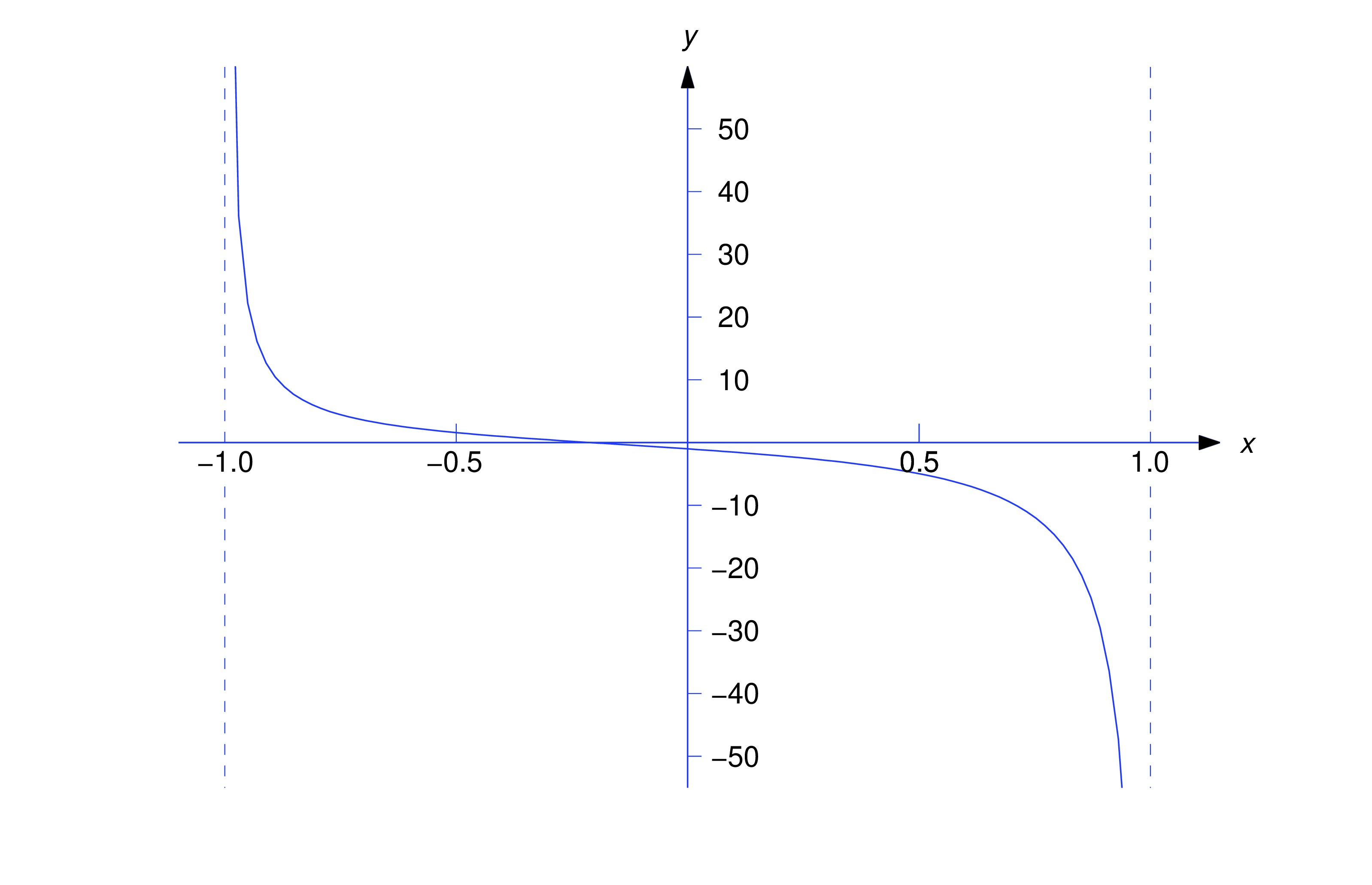We study the method of variation of parameters for finding a particular solution to a nonhomogeneous second order linear differential equation.
Variation of Parameters
In this section we give a method called variation of parameters for finding a particular solution of
if we know a fundamental set of solutions of the complementary equation Having found a particular solution by this method, we can write the general solution of (eq:5.7.1) asSince we need only one nontrivial solution of (eq:5.7.2) to find the general solution of (eq:5.7.1) by reduction of order, it’s natural to ask why we’re interested in variation of parameters, which requires two linearly independent solutions of (eq:5.7.2) to achieve the same goal. Here’s the answer:
- (a)
- If we already know two linearly independent solutions of (eq:5.7.2) then variation of parameters will probably be simpler than reduction of order.
- (b)
- Variation of parameters generalizes naturally to a method for finding particular solutions of higher order linear equations (Trench 9.4) and linear systems of equations (Trench 10.7), while reduction of order doesn’t.
- (c)
- Variation of parameters is a powerful theoretical tool used by researchers in differential equations. The discussion of this is beyond the scope of this book.
We’ll now derive the method. As usual, we consider solutions of (eq:5.7.1) and (eq:5.7.2) on an interval where , , , and are continuous and has no zeros. Suppose that is a fundamental set of solutions of the complementary equation (eq:5.7.2). We look for a particular solution of (eq:5.7.1) in the form
where and are functions to be determined so that satisfies (eq:5.7.1). You may not think this is a good idea, since there are now two unknown functions to be determined, rather than one. However, since and have to satisfy only one condition (that is a solution of (eq:5.7.1)), we can impose a second condition that produces a convenient simplification, as follows.Differentiating (eq:5.7.3) yields
As our second condition on and we require that Then (eq:5.7.4) becomes that is, (eq:5.7.5) permits us to differentiate (once!) as if and are constants. Differentiating (eq:5.7.4) yields (There are no terms involving and here, as there would be if we hadn’t required (eq:5.7.5).) Substituting (eq:5.7.3), (eq:5.7.6), and (eq:5.7.7) into (eq:5.7.1) and collecting the coefficients of and yields As in the derivation of the method of reduction of order, the coefficients of and here are both zero because and satisfy the complementary equation. Hence, we can rewrite the last equation as Therefore in (eq:5.7.3) satisfies (eq:5.7.1) if where the first equation is the same as (eq:5.7.5) and the second is from (eq:5.7.8).We’ll now show that you can always solve (eq:5.7.9) for and . (The method that we use here will always work, but simpler methods usually work when you’re dealing with specific equations.) To obtain , multiply the first equation in (eq:5.7.9) by and the second equation by . This yields
We can now obtain and by integrating and . The constants of integration can be taken to be zero, since any choice of and in (eq:5.7.3) will suffice.
You should not memorize (eq:5.7.11) and (eq:5.7.12). On the other hand, you don’t want to rederive the whole procedure for every specific problem. We recommend a compromise:
- (a)
- Write to remind yourself of what you’re doing.
- (b)
- Write the system for the specific problem you’re trying to solve.
- (c)
- Solve (eq:5.7.14) for and by any convenient method.
- (d)
- Obtain and by integrating and , taking the constants of integration to be zero.
- (e)
- Substitute and into (eq:5.7.13) to obtain .
There’s nothing wrong with leaving the general solution of (eq:5.7.16) in the form (eq:5.7.17); however, we think you’ll agree that (eq:5.7.18) is preferable. We can also view the transition from (eq:5.7.17) to (eq:5.7.18) differently. In this example the particular solution contained the term , which satisfies the complementary equation. We can drop this term and redefine , since is a solution of (eq:5.7.16) and is a solution of the complementary equation; hence, is also a solution of (eq:5.7.16). In general, it’s always legitimate to drop linear combinations of from particular solutions obtained by variation of parameters. We’ll do this in the following examples and in the answers to exercises that ask for a particular solution. Therefore, don’t be concerned if your answer to such an exercise differs from ours only by a solution of the complementary equation.
The characteristic polynomial of the complementary equation
is , so and form a fundamental set of solutions of (eq:5.7.20). We look for a particular solution of (eq:5.7.19) in the form where
Comparison of Methods
We’ve now considered three methods for solving nonhomogeneous linear equations: undetermined coefficients, reduction of order, and variation of parameters. It’s natural to ask which method is best for a given problem. The method of undetermined coefficients should be used for constant coefficient equations with forcing functions that are linear combinations of polynomials multiplied by functions of the form , , or . Although the other two methods can be used to solve such problems, they will be more difficult except in the most trivial cases, because of the integrations involved.
If the equation isn’t a constant coefficient equation or the forcing function isn’t of the form just specified, the method of undetermined coefficients does not apply and the choice is necessarily between the other two methods. The case could be made that reduction of order is better because it requires only one solution of the complementary equation while variation of parameters requires two. However, variation of parameters will probably be easier if you already know a fundamental set of solutions of the complementary equation.
Text Source
Trench, William F., ”Elementary Differential Equations” (2013). Faculty Authored and Edited Books & CDs. 8. (CC-BY-NC-SA)